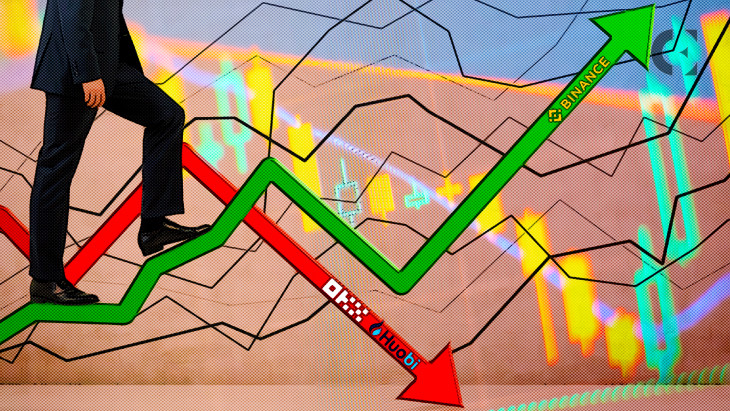New research claims that cryptocurrency exchange Huobi has seen an 18% decline in market share since 2020. Meanwhile, the exchange’s native stablecoin USDD has continued to trade below its dollar peg, forcing the exchange to face an “uphill challenge” as it tries to regain its former position. As of the last weeks of 2022, Huobi was said to have accounted for only 4% of the global exchange market, down from 22% in 2020.
The research conducted by the analysis platform Kaiko states that Justin Sun’s exchange remained “undoubtedly the biggest loser of the crypto bear market.” Kaiko adds that USDD has seen strong resistance despite claims by issuers that it is backed by a collateral ratio of more than 200% in the form of TRON’s native TRX, Bitcoin, USDC, and USDT.
The TRON DAO Reserve, also founded by Justin Sun, issues stablecoins on the TRON blockchain and ensures their value is stable against the US dollar. In the wake of FTX’s demise, Sun’s biggest problems emerged when USDD failed to restore its peg. Since then, it has consistently traded for less than a dollar.
On the other hand, when Huobi’s financial stability came into question, users withdrew nearly $100 million last week. In turn, Sun, the largest stakeholder in Huobi, transferred $100 million in USDC and USDT from Binance to Huobi to bolster user faith in the dwindling exchange.
However, Kaiko researchers noted that USDD could “still regain its peg” despite current conditions.
“When looking at USDD-USDT order books, which is the highest volume trading pair, we can observe that market depth on the bid and ask side has been persistently imbalanced since early December,” the report said, adding, “The ratio of bids to asks (total volume of bids divided by volume of asks) was below 1 for most of the past month, which suggests heavy selling pressure is keeping the price down.”
Meanwhile, it was reported last week that exchange staff salaries were being paid in stablecoins, prompting employee protests. Furthermore, another report claimed that the exchange would lay off 20% of its workforce. Sun and his team, however, have claimed these reports to be FUD.
 coinedition.com
coinedition.com
